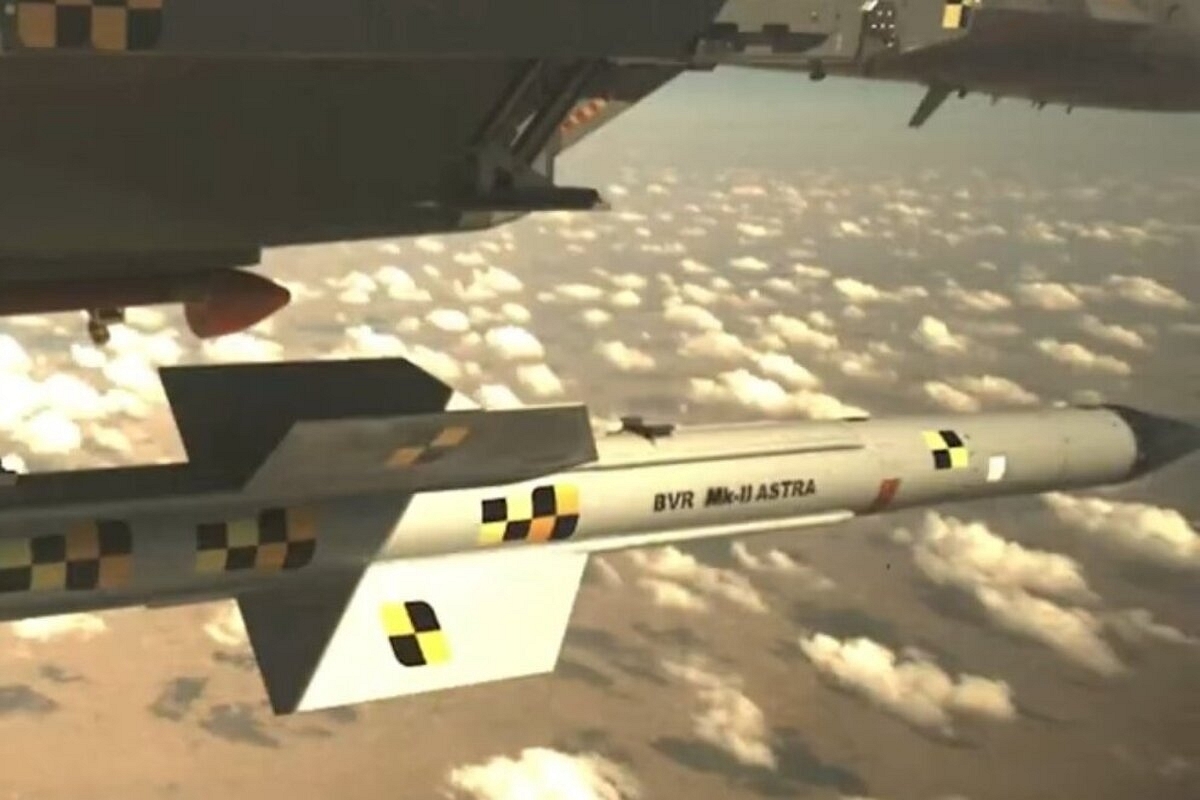News Brief
IAF Shows Off 160 Km Range Astra Mk-II Missile In Promo Video Released Ahead Of 90th Air Force Day
- Astra Mark-II will have improved jammer resistance and an indigenous seeker.
- It will also be equipped with a dual-pulse rocket motor to improve the range and performance of the missile.

Astra Mk-II.
A promo video put out by the Indian Air Force (IAF) ahead of the 90th Air Force Day on 8 October shows an Astra Mk-II beyond-visual-range-air-to-air missile (BVRAAM) being launched from a Su-30 MKI fighter.
This is the first time that a video of the launch of the missile, the second in the series of Astra BVRAAMs, has been released.
The IAF released the nearly nine-minute long promo video ahead of the annual press conference of the Chief of Air Staff earlier today (4 October).
Earlier this year, it was reported that the 160-km range Astra Mk-II was to be tested in May 2022. However, there was no official confirmation at the time.
Similarly, a report in February 2021 said the missile was being prepared for tests from a ground launcher at the integrated test range located in Balasore, Odisha.
This, too, was not confirmed by the government or the Defence Research and Development Organisation.
The first missile in the Astra series, the 110 km range Astra Mk-I, has cleared all tests.
A deal for 248 missiles, including 48 for the Indian Navy, has already been signed with Bharat Dynamics Limited.
"The missile, for which successful trials have already been undertaken by the IAF, is fully integrated on the Su 30 MK-I fighter aircraft & will be integrated with other fighter aircraft in a phased manner, including the Light Combat Aircraft (Tejas). The Indian Navy will integrate the missile on the MiG 29K fighter aircraft," the Ministry of Defence said in May 2022.
Astra Mark-II will have improved jammer resistance and an indigenous seeker, reports say. The missile will be equipped with a dual-pulse rocket motor to improve the range and performance of the missile.
India is also working on Astra Mk-III, which will have a range of over 300 km. The missile will have solid fuel-based ducted ramjet (SFDR) propulsion.
Over the last few years, the DRDO has conducted multiple tests of SFDR technology critical for long-range air-to-air missiles.
The development of SFDR technology will enable India to make its own long-range air-to-air missile, which could mirror the capabilities of the best missiles in this class, like MBDA’s Meteor, which the IAF uses on its Rafales.
The Meteor missile also depends on its ramjet propulsion for "more energy to manoeuvre during the endgame of the engagement."
"The ramjet motor [propulsion system] provides the [Meteor] missile with thrust all the way to target intercept, providing the largest No-Escape Zone of any air-to-air missile," the literature on the MBAD website reads.
Support Swarajya's 50 Ground Reports Project & Sponsor A Story
Every general election Swarajya does a 50 ground reports project.
Aimed only at serious readers and those who appreciate the nuances of political undercurrents, the project provides a sense of India's electoral landscape. As you know, these reports are produced after considerable investment of travel, time and effort on the ground.
This time too we've kicked off the project in style and have covered over 30 constituencies already. If you're someone who appreciates such work and have enjoyed our coverage please consider sponsoring a ground report for just Rs 2999 to Rs 19,999 - it goes a long way in helping us produce more quality reportage.
You can also back this project by becoming a subscriber for as little as Rs 999 - so do click on this links and choose a plan that suits you and back us.
Click below to contribute.
Latest